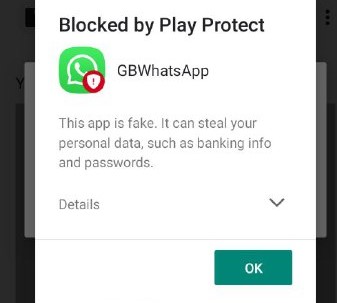Step by step guide on how to get into Cyber Security on your own
Now that you understand the 9 elements of Cyber Security, here is a step by step guide on how you can study on your own to get into Cyber Security

Step 1: Understand Operating systems
Start with understanding the basics of these 3 operating systems
- Linux
- Windows and
- Mac
a. Linux
100% of the world's super computers are powered by Linux. so it's a no brainer to learn and understand this OS first.
Linux course 1 - Introduction to Linux. It's 48 hours of detailed learning
Linux course 2 - The “start from scratch” Linux course
Read also : Cyber security 101 : Basics.
After understanding the fundamentals of Linux OS, learn how to script. Scripting is where you automate processes using a code. Basically, anything that can manually be done step by step can be scripted to reduce the time it takes especially if it is a task that's done several times in a day.
To learn scripting, here are 2 courses on writing shell scripts in Linux:
- Writing shell scripts
- Shell Scripting Tutorial
Now that you know how to write shell scripts in Linux, learn the common deployment methods. Deployment is where distribute software and updates in the easiest way possible.
To understand this better, read : M23 - Open Source Software Deployment And Management System For Linuxm2 by @ostechnix
Now that you can deploy, you should know the common administration tools. SysAdmin is ensuring the reliability of a system. In the world of Linux, the major players are Webadmin, YaST, COAS and Linuxconf.
To understand this better, read Linux System Administration Tools
So far, you:
- understand the fundamentals of Linux
- can write shell scripts
- have learned the common deployment methods
- can use common admin tools.
Now, it's time to understand how scripts and can interact with the Linux OS
Read also : The SSS and law enforcement in Nigeria - It's Origin, Excesses & Solutions.
To understand the interactions, read Fundamentals of computer systems: Role of an operating system (OS); and if you need a video course, watch : Interacting with the OS: User Space
Now let's move on to Windows
b. Windows
This is the OS designed by Microsoft for mainstream PCs and devices. As with Linux, you need to understand the fundamentals.
Read - The Ultimate Guide to Windows Server 2019 - The Ultimate Guide to Windows Server 2019
Windows Operating System Fundamentals (288 pages) - bit.ly/2AdmxFG
This @Udemy course by Marious Kuriata is my fave to understand the fundamentals of Windows OS : Microsoft MTA Windows OS Fundamentals 98-349
Now that you understand the fundamentals of the Windows OS: - learn how to create and run scripts on Win 10 by reading @chrisbhoffman's tutorial here: How to Create and Run Bash Shell Scripts on Windows 10
Read also : Password Strength Indicator using REGEX.
- learn the deployment methods using Windows, read : Windows 10 deployment scenarios (Windows 10). But if you are not patient enough to read all 1144 pages, read @Brinkhoff_C's write up here: Windows Virtual Desktop technical deployment .
- read the admin tools for windows here : Administrative Tools in Windows 10 (Windows 10)
Now let's move on to Mac OS
c. Mac OS
- Fundamentals : Free OS X Basics Tutorial at GCFGlobal
- Scripting : What Is AppleScript? Writing Your First Mac Automation Script
Read also : SOLVED : GBWhatsApp blocked by Google Play Protect.
- Deployment Mac Deployment Overview
- Admin tools MAC ADMIN INFO
So far, you:
- know the fundamentals of Linux, Windows and Mac OS
- understand scripting
- know deployment basics
- can identify common admin tools and
- know how apps interact with the OS
Now that you understand the 3 main types of OS and the basics, you are ready for the next step - Networking Concepts
Step 2: Networking Concepts
Once you know your OS, understanding the basics of how different devices in a network interact is crucial. Is the network private or closed? Does it connect to the internet?
To understand this better, read : Basics of Computer Networking - GeeksforGeeks.
Coursera has a really good in depth course on networking concepts here : Networks and Communications Security
Read also : Resolving Cloudinary 401 Unauthorized Error for PDF Viewing.
Now, you understand OS fundamentals and networking concepts, it's time to learning a programming language
Step 3: Programming languages
You thought you could escape programming huh? Not a chance. I already wrote about how to learn a Programming language here : How to be a Data Analyst/ Scientist/ Engineer and how to carve a niche for yourself.
The only thing I'll add is that you should not panic if you don't get programming languages. As with everything, you need to be deliberate about learning it. I always tell people getting into Cybersecurity to start with Python, then move to C
To know why programming languages are important in Cyber security, read this 5 Must-Have Programming Languages for Cybersecurity
Step 4 : Basic Cloud and Security Concepts
Now, you are ready to understand what exactly the cloud is and how you can implement security in the cloud. To understand basic cloud concepts, take this @cloudacademy course : Key Cloud Concepts - What is Cloud Computing? by @Stuart_A_Scott
Read also : Some I.T(Information Technology) certifications.
Learn basic security concepts with @Oracle's detailed course on understanding Application level and Transport level security Basic Security Concept.
Now we can move on to my favourite part of Cybersecurity - Pentesting
Step 5 : Penetration Testing
This is when you simulate attacks on a device, network or system to identify vulnerabilities. The aim is to make sure security issues are identified before hackers exploit them. Think of it like a fire drill
To understand PenTesting better, read : What is pen test (penetration testing)? by @WhatIsDotCom
Here is a good course by @cybraryIT on PenTesting : How to become a Penetration Tester
Read also : Top 10 In-demand jobs and Certificates in Canada and Tech Skills in demand in 2020.
Also read this helpful guide by @beaucarnes on becoming an ethical hacker in 15 hours: Become an ethical hacker with this free 15-hour penetration testing course
So far, you've learned:
1. Four main types of cyber threats;
2. Nine elements of cybersecurity;
3. Fundamentals of an OS;
4. Networking Concepts;
5. Programming languages;
6. Basic Cloud and Security Concepts; and
7. Pentesting
You're ready for a career in Cybersecurity! Caveat - As with starting anything new, you need to practice, practice, practice. And put yourself out there.
All the best, I'm rooting for you
Author : Kekeocha Justin










